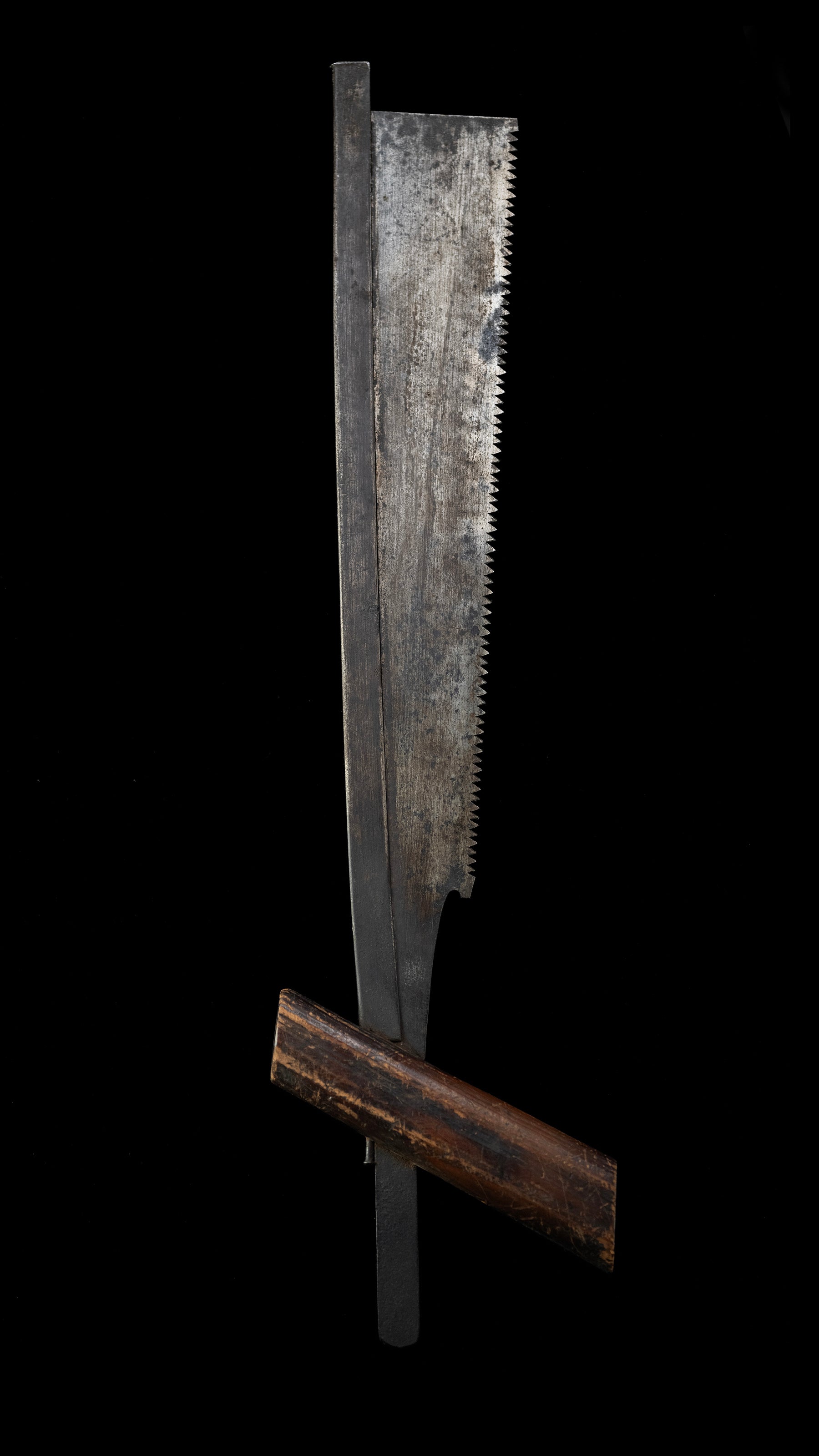
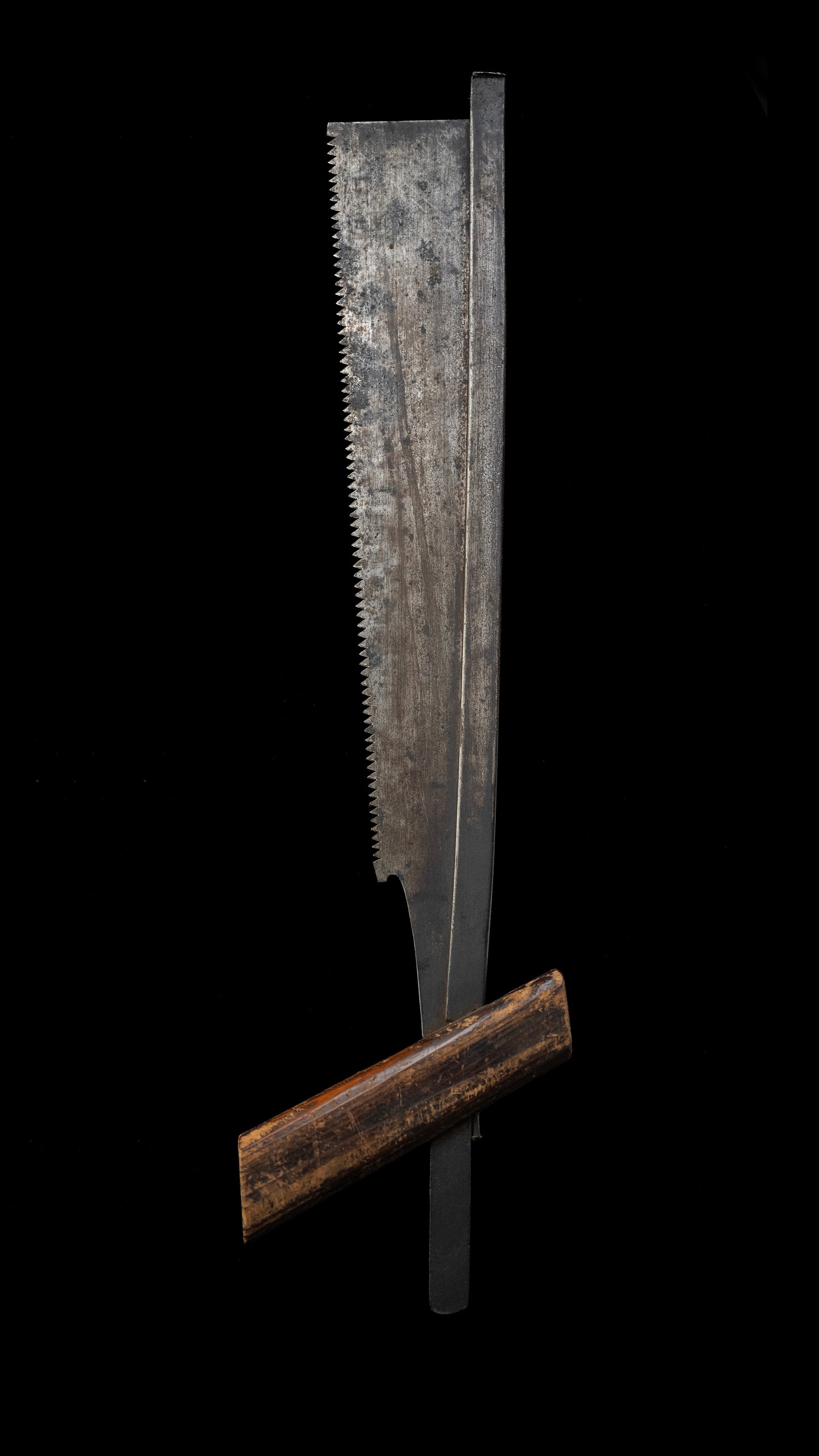

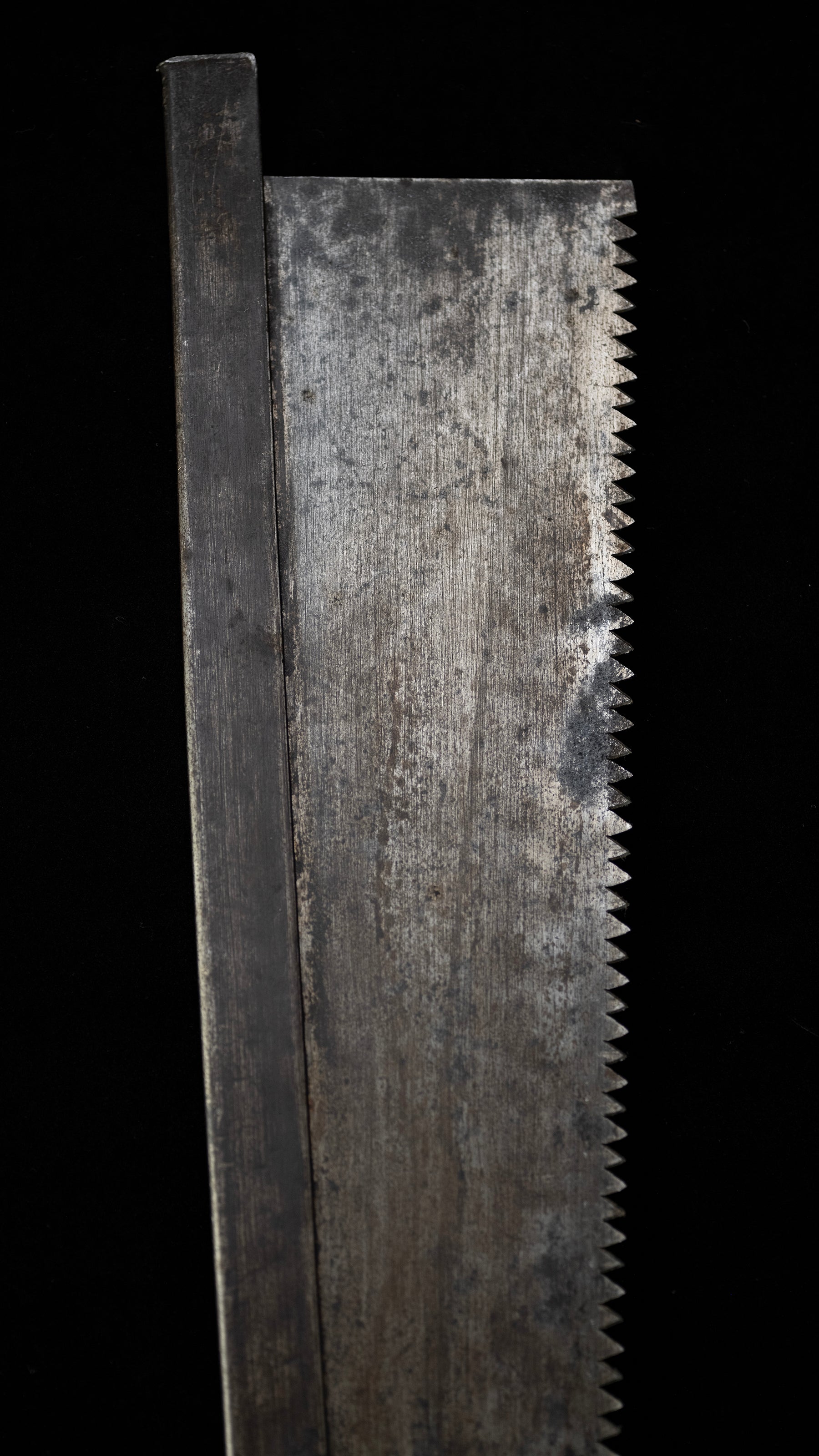
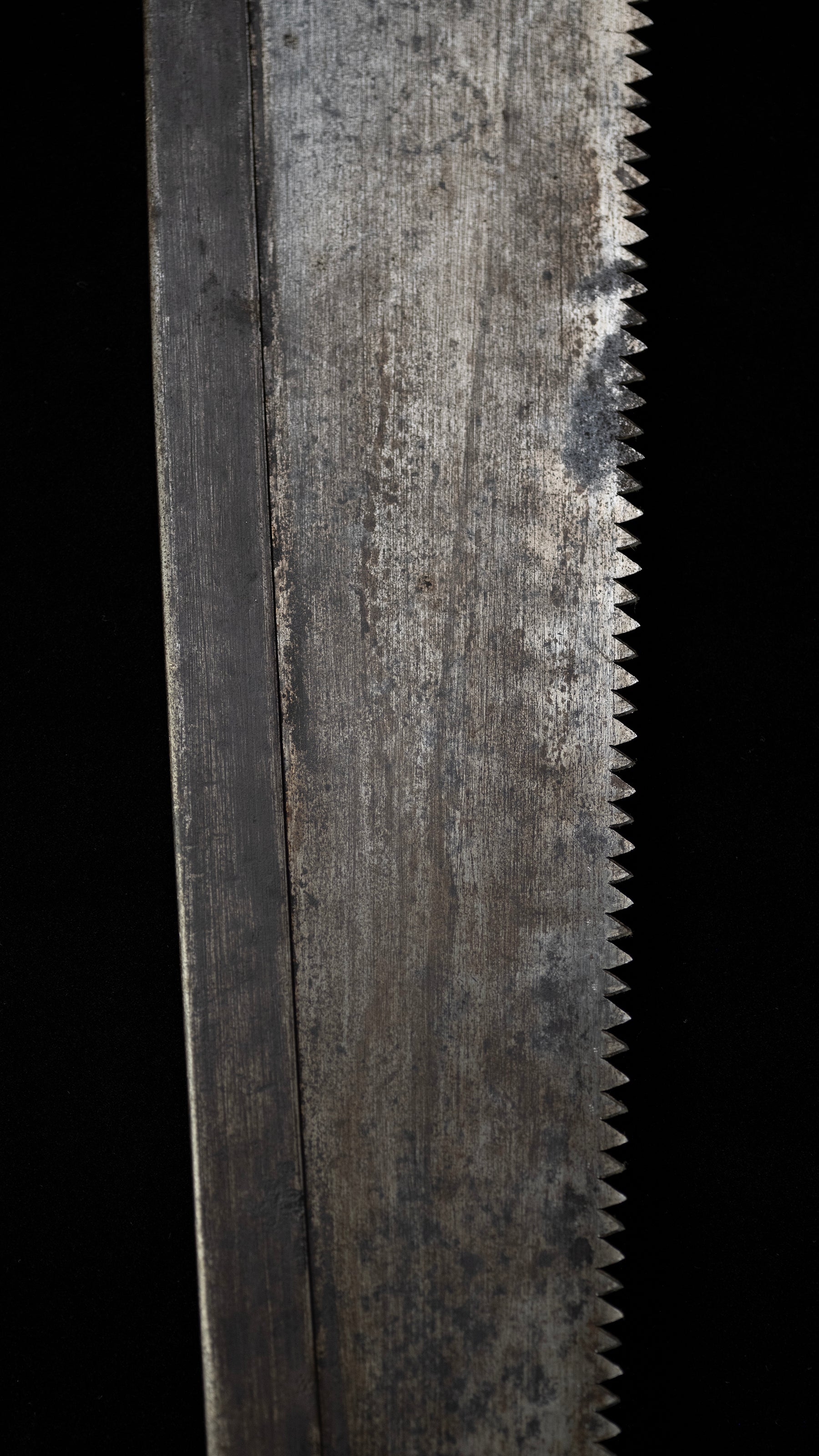
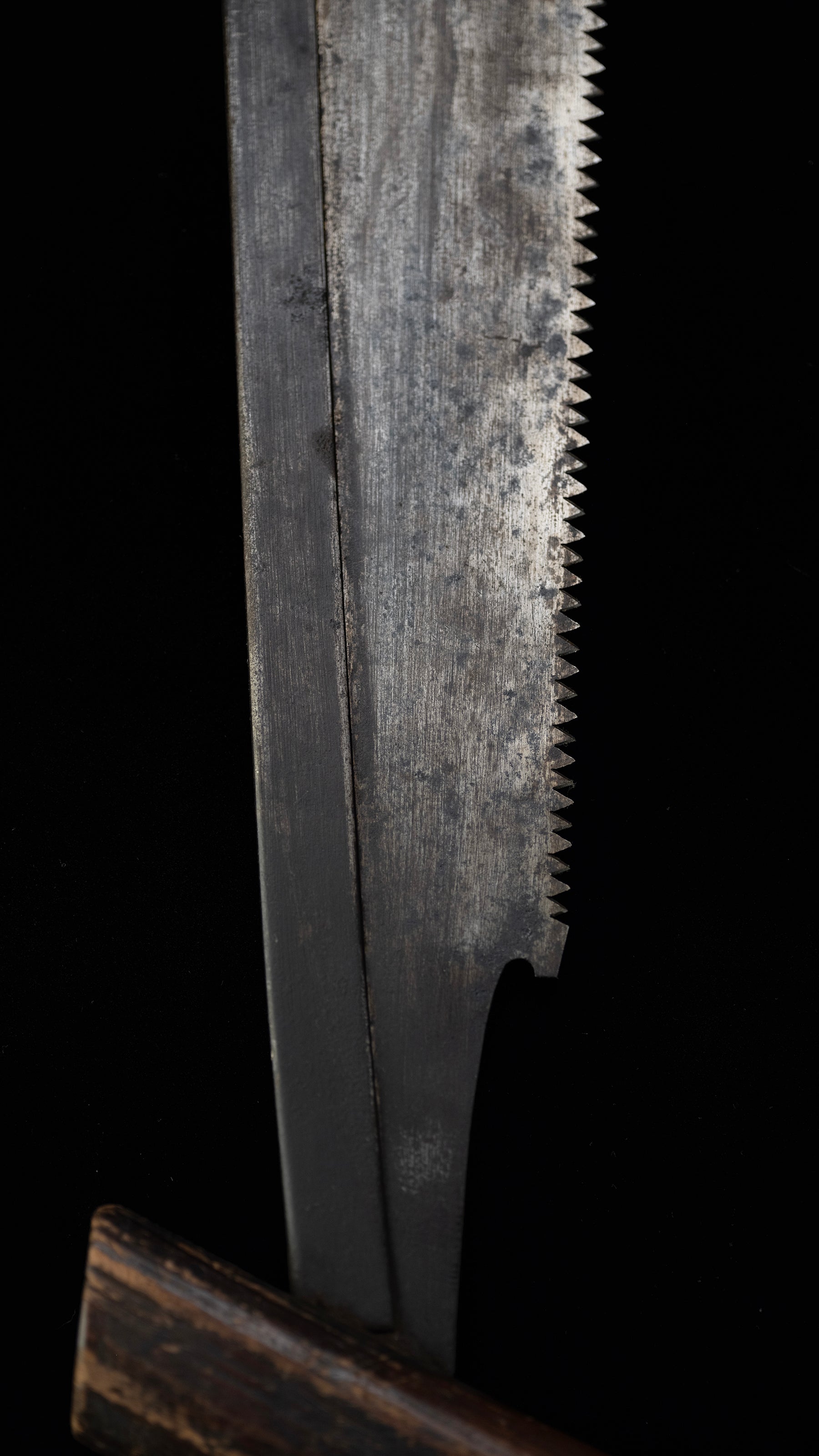
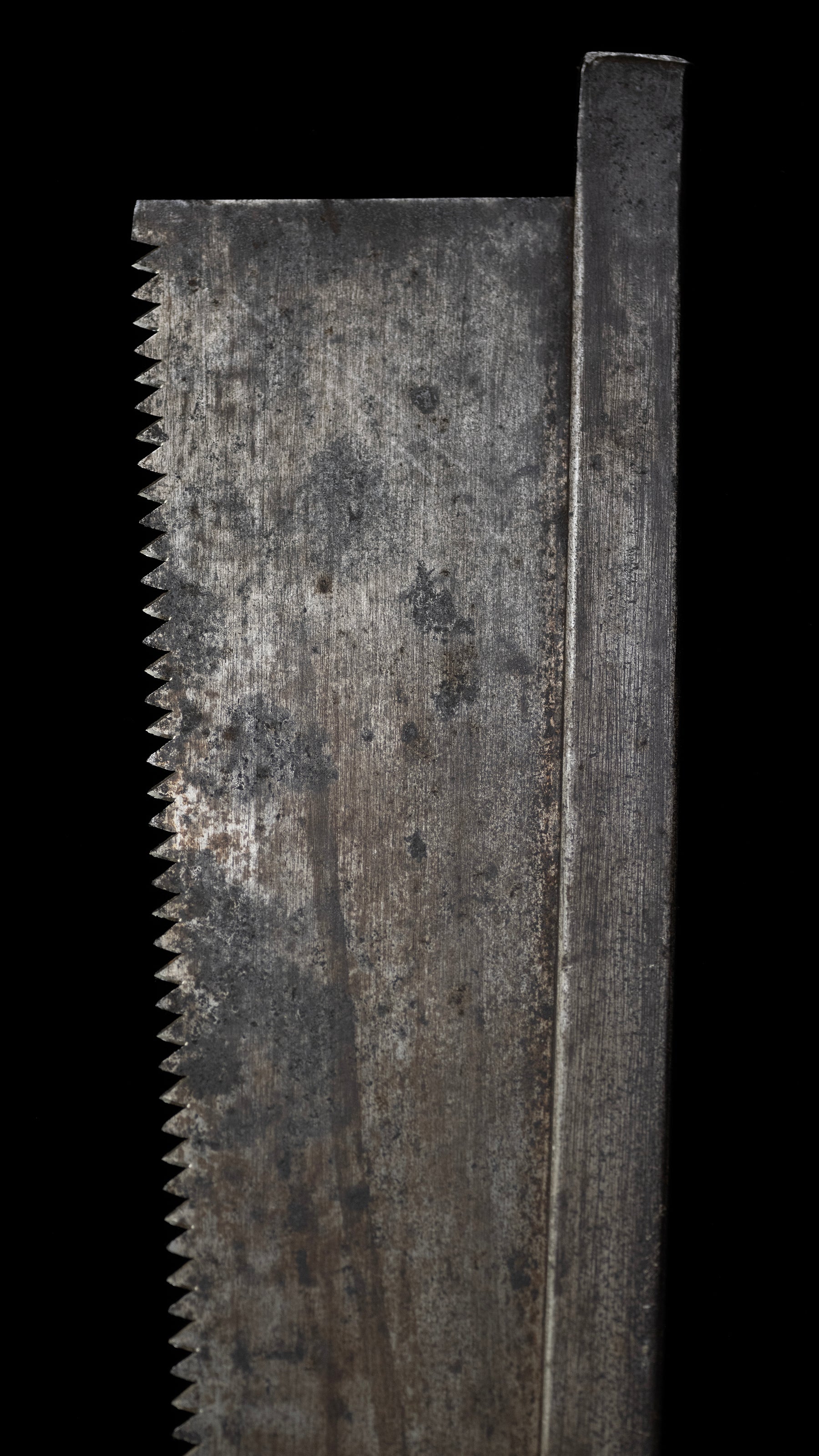
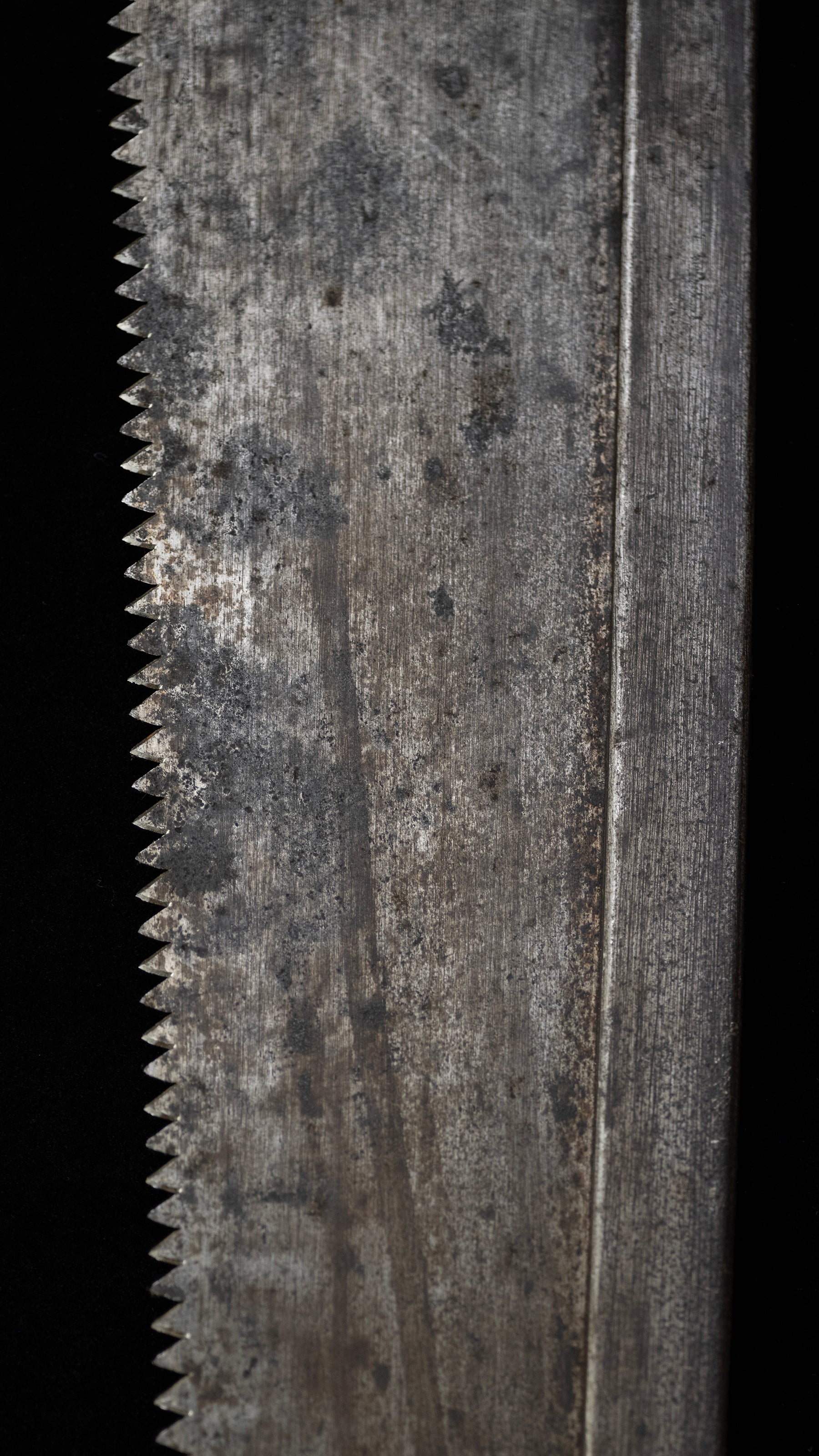
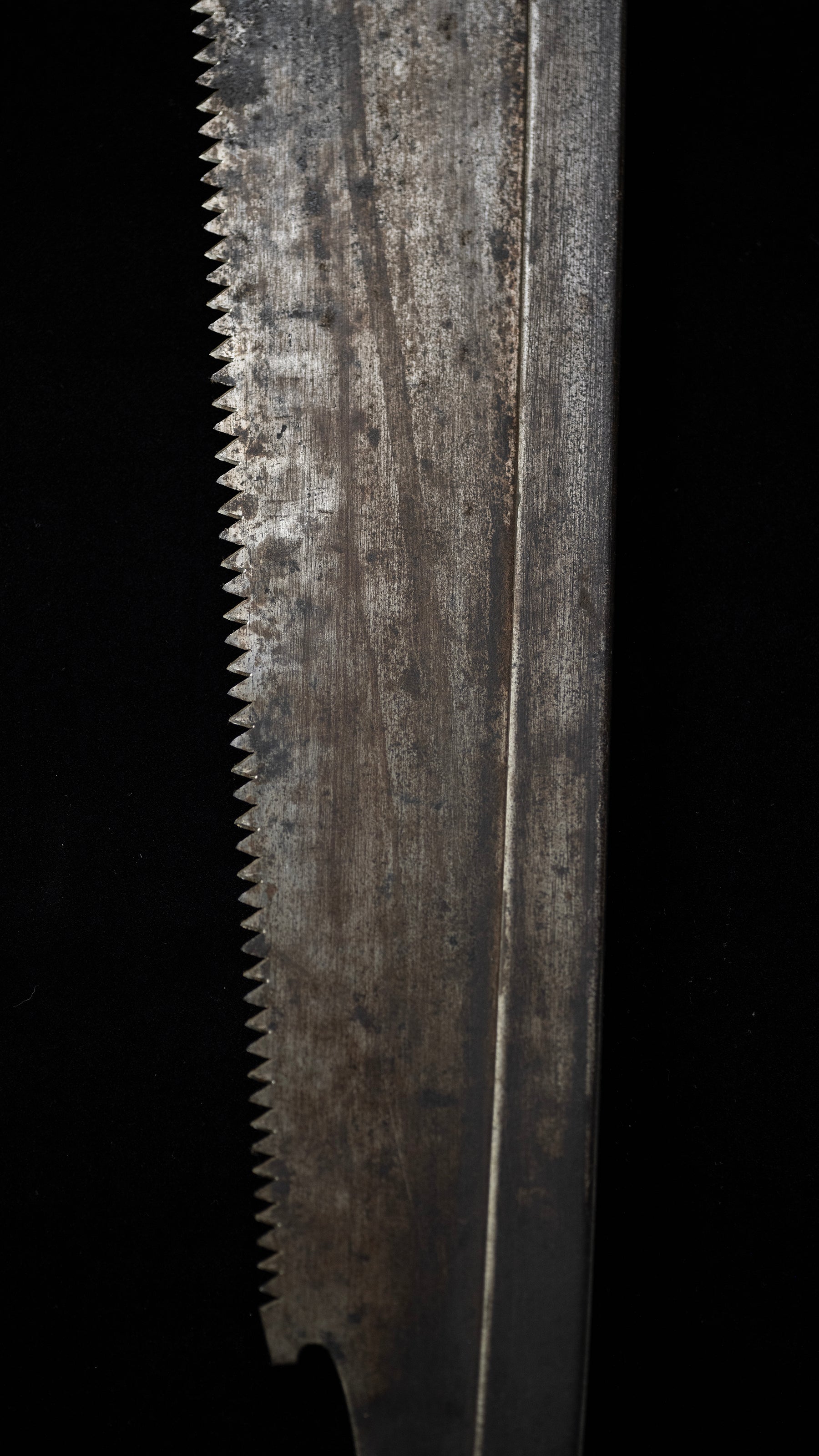
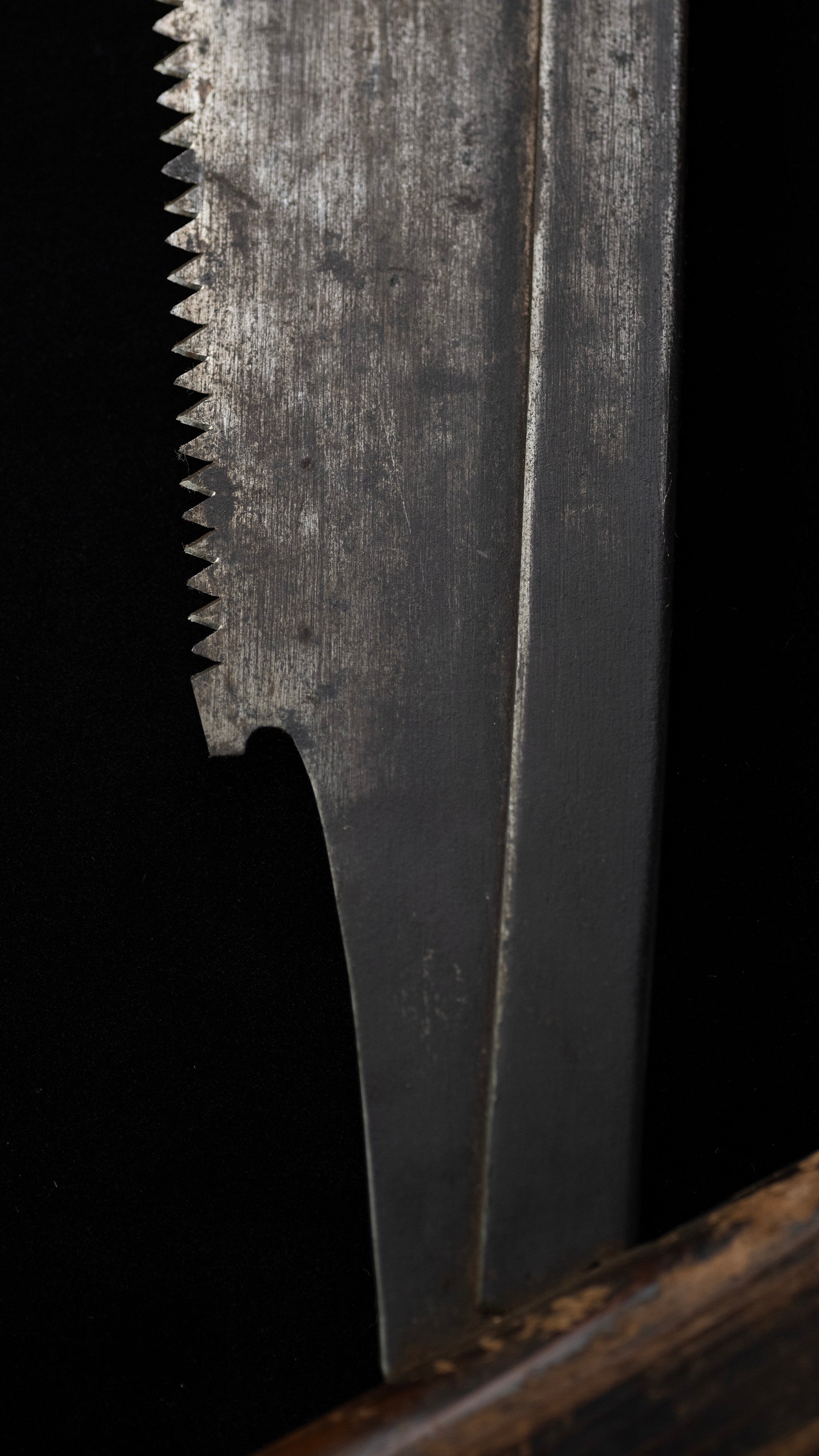
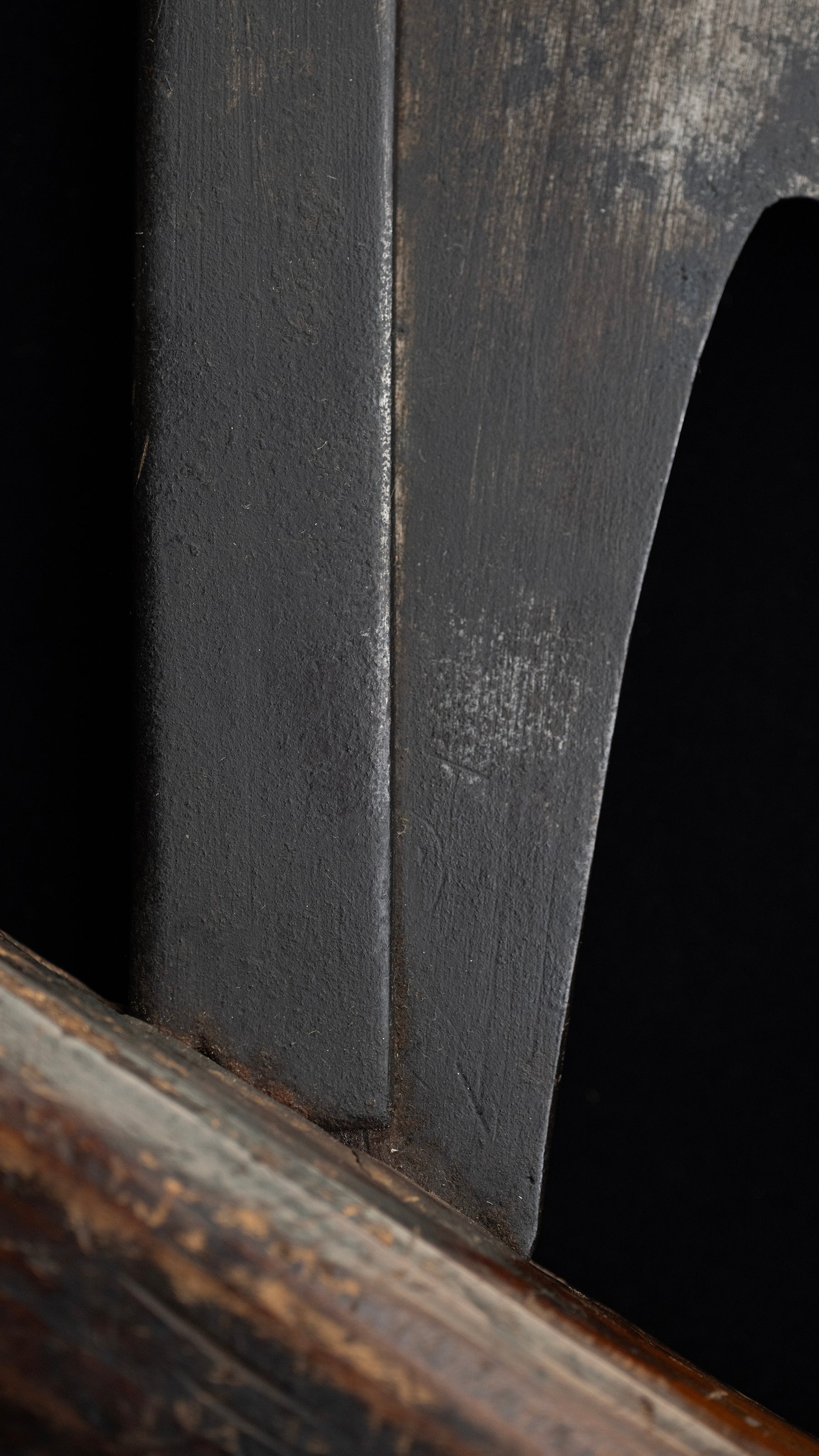
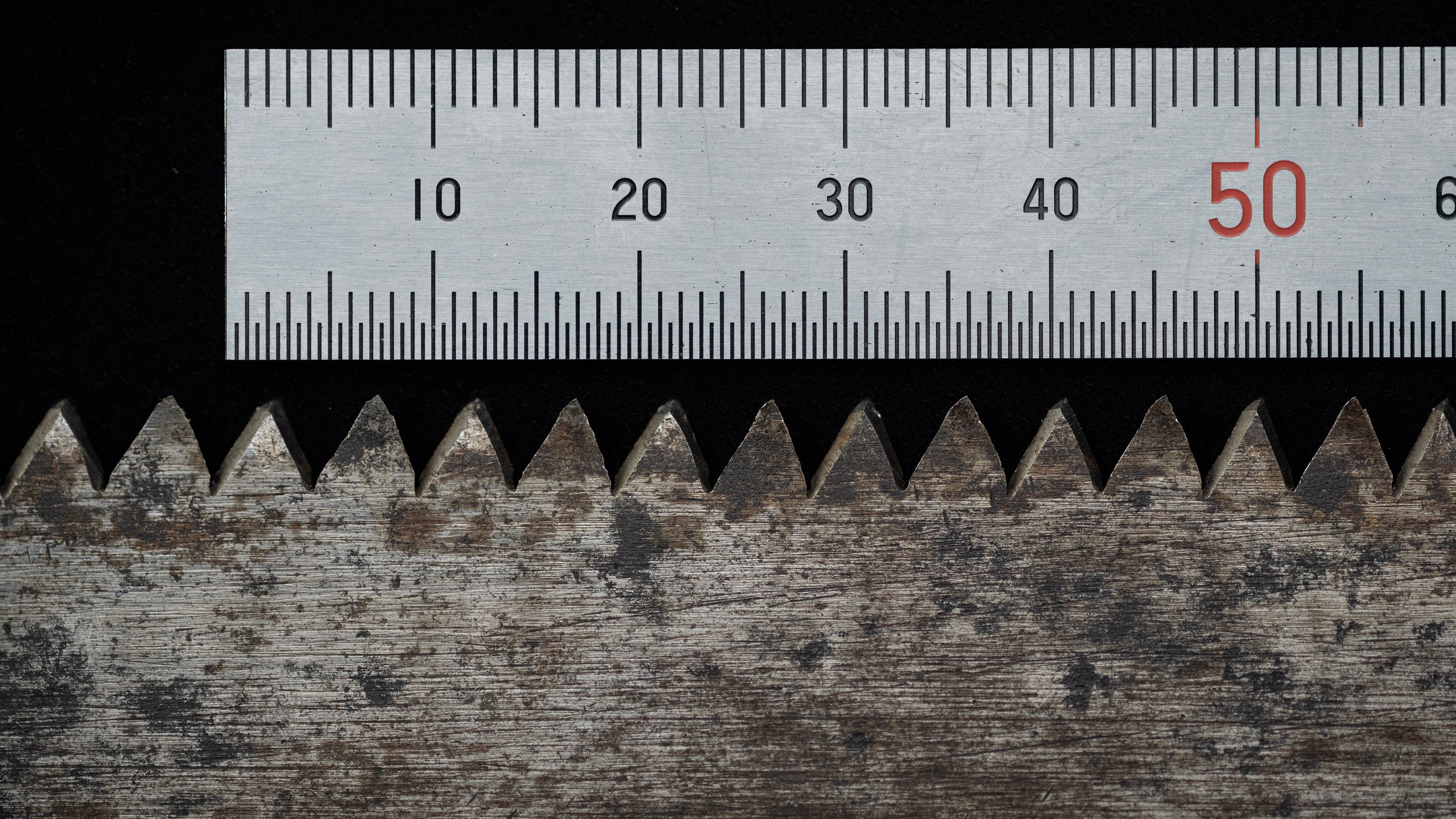
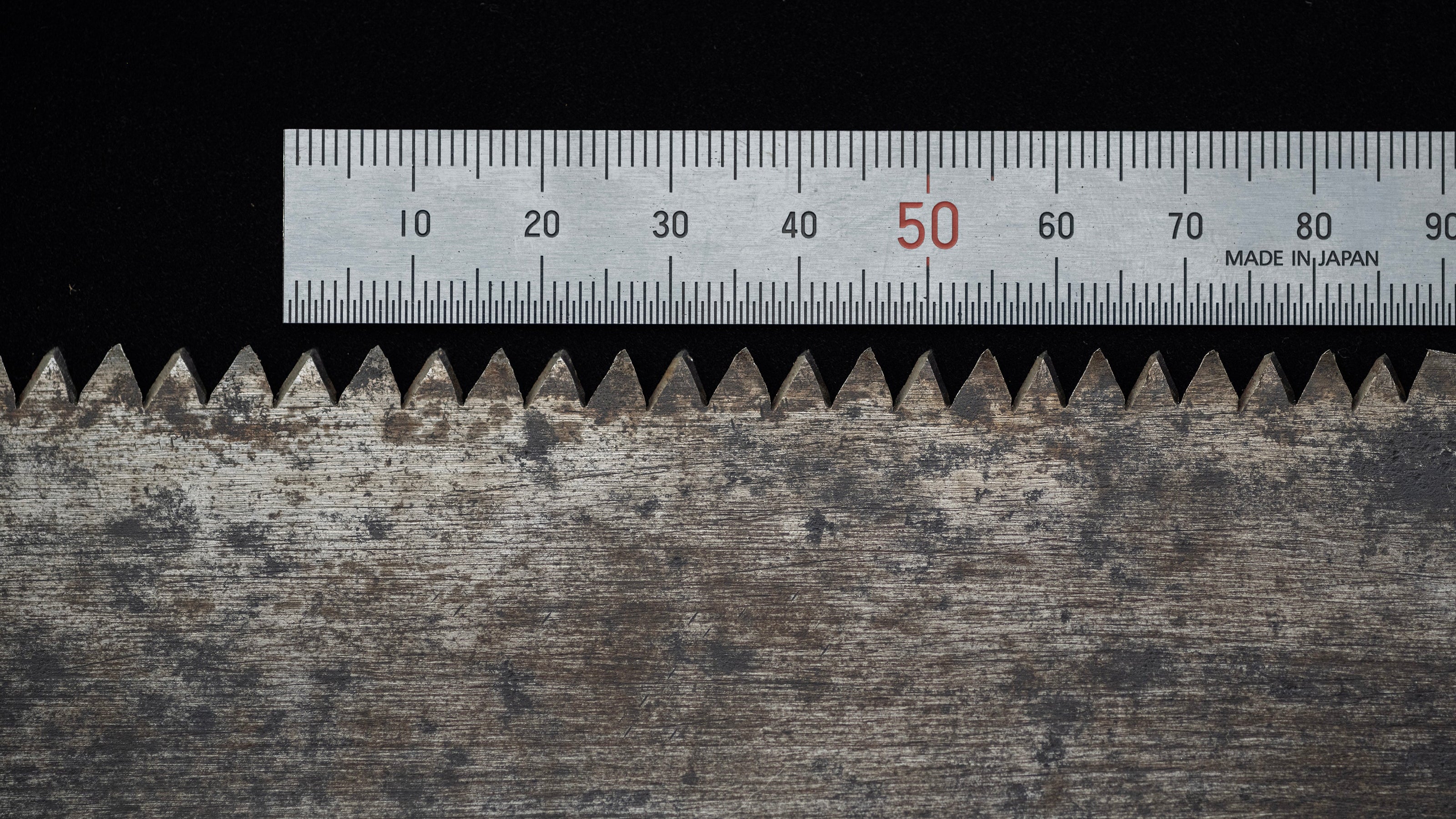
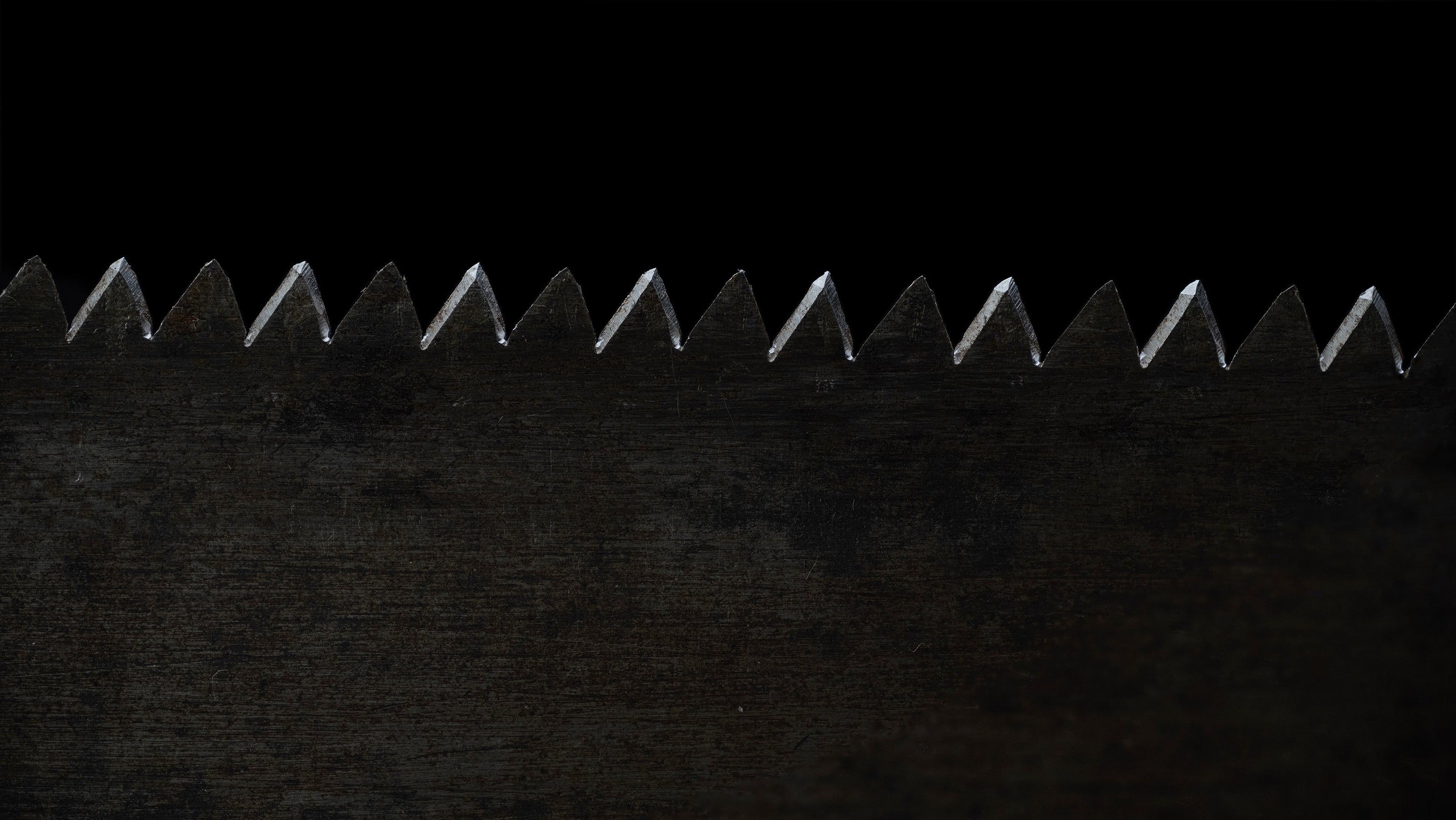
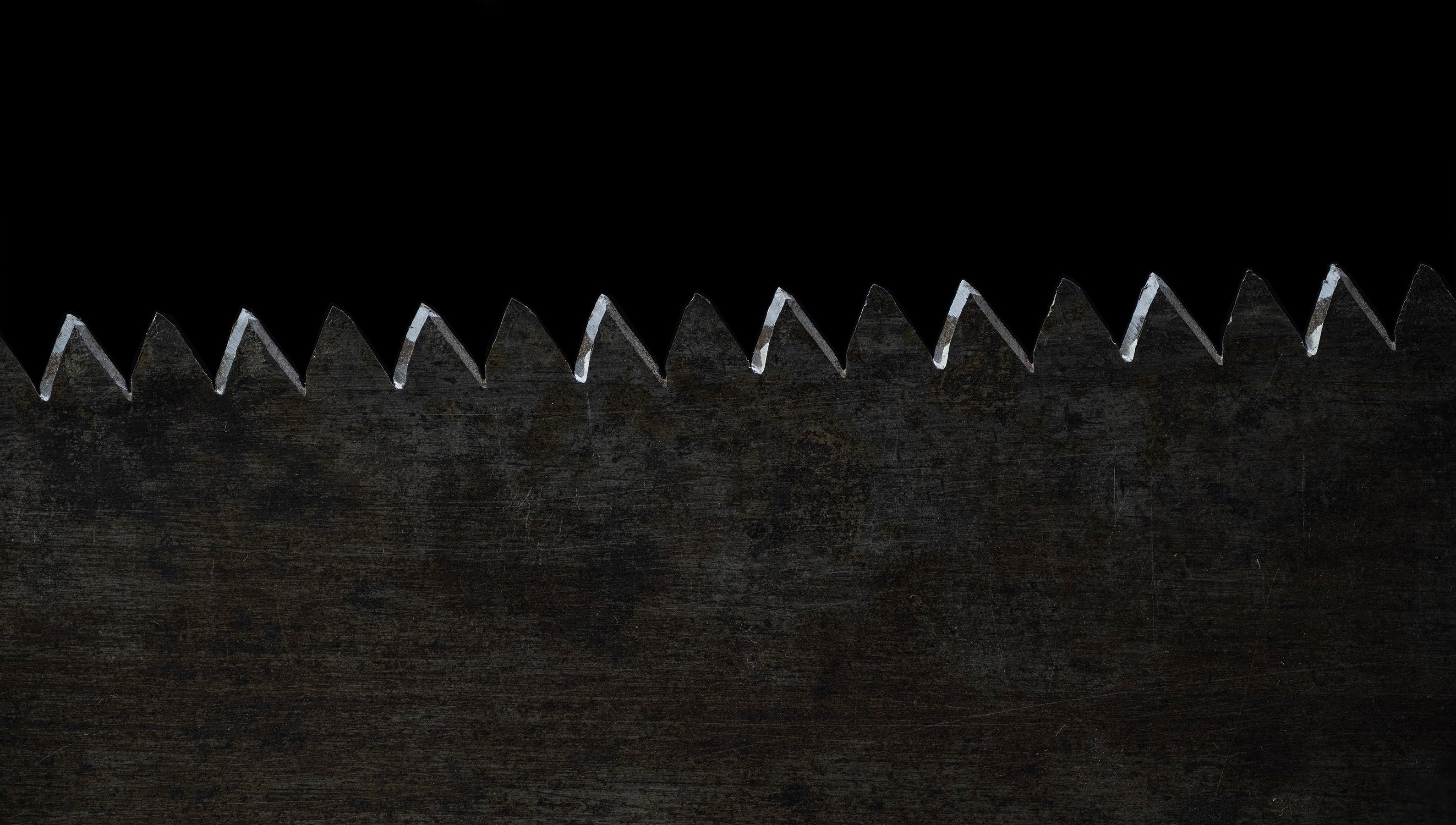
Kiri Douzuki Noko Japanese Geta Craftsman's Hand Saw - 390mm
Smith name: Unknown
Steel: Carbon Steel
Cutting edge length: 390mm
Total length: 640mm
Blade thickness: about 0.65mm
Cutting Depth: about 45mm
Weight: 553g
Blade sharpening and adjusting: Tsuchida Noboru
Manufacture Era: Early 1960s (according to collector's memory)
Accessories: -
Additional Information: Used, in good condition.
This saw comes from a retired Carpenter in Saitama Prefecture, it is one of the saws in his collection. The saw was rusty, but the rust was removed a long time ago (it was in this state when I got it). It does not affect its use.
Mr. Tsuchida Boboru posted a post after sharpening and adjusting the saw. Please click the link below:
https://x.com/tsuchidahamono/status/1899245760686010766
Below is my translation of this post:
“Amazing! The craftsmen in the past were clever. Its teeth are “Tsurigane-ba/釣鐘刃” (traditional bell-shaped), with a coarse pitch, but the blade is thin; and because the blade is thin, there is a folded steel back, which is a cross-cut saw for Paulownia wood. I haven't sharpened a saw with this kind of teeth in over a decade, so I did some sawing experiments.
It saws very quickly and even though the Paulownia wood is quite porous (Paulownia wood is porous, with thin walls and lots of space between the wood fibers and other cells), and it will not cause one side of the Paulownia wood to break into small pieces when sawing, as shown in the picture. It cuts faster and cleaner than a common crosscut saw with finer teeth!“
Tsurigane-ba/釣鐘刃,It is named because the tooth resembles a temple bell. Although it still looks like a triangular tooth, some details have been added to the bevels on either side of the teeth, as can be seen in the last two photos.
This tooth design effectively reduces the cutting resistance generated during sawing, which is one of the causes of rough cut surfaces in loose and porous wood.
オプションを選択















